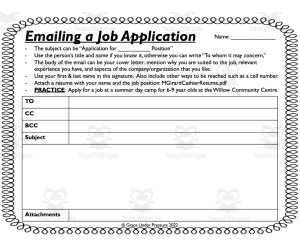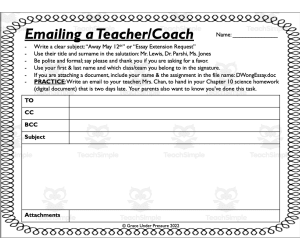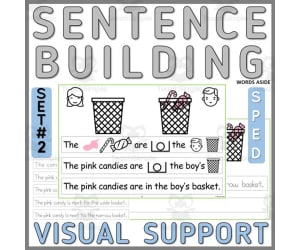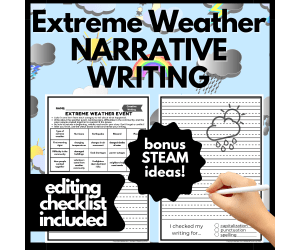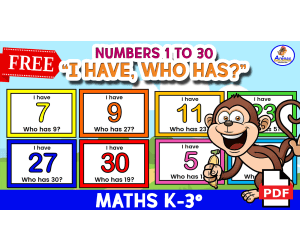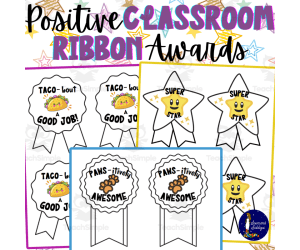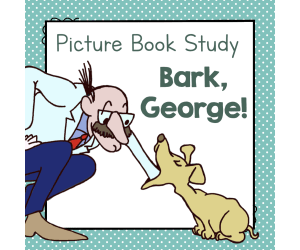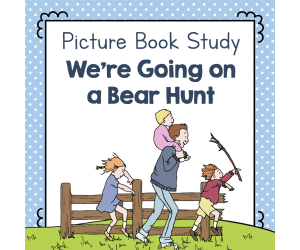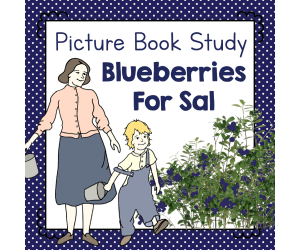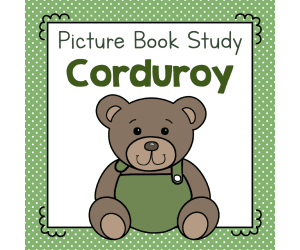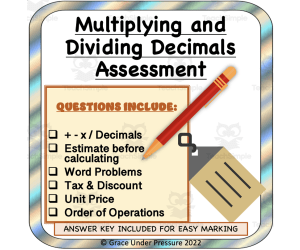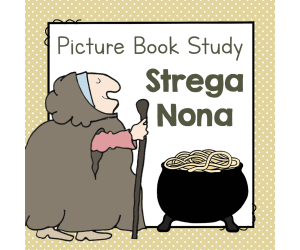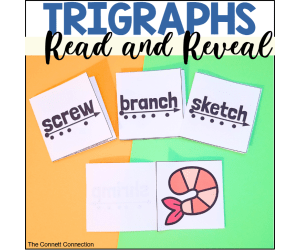2,829 products added recently
Page 514 - Newest Teaching Resources
Email a Post-Secondary Institution: Letter Writing and Life Skills
Special Resources, Life Studies, ELA, Life Skills, Business, Career, Writing, Grade 7, 8, 9, 10, 11, 12, Worksheets & Printables, Worksheets
Email a Post-Secondary Institution: Modern Letter Writing and Life Skills for Grades 7-12 This resource helps students write polite emails to colleges and universities to request information they may require. This will be an important skill in the senior grades as students start to gather information about prerequisites and application procedures. Students learn email basics like addressing the recipient, crafting the subject line, and signing off appropriately. Use the supplemental Email Vocabulary Worksheet CLICK HERE to teach these terms. Then students can write a sample email together as a class asking a question of a college or university employee. Finally, students independently compose an email based on the provided prompt. The resource is adaptable for grades 7-12. It develops real-world writing skills students need to email teachers, colleges, and future employers. What's Included A one-page PDF printable worksheet with an email template and tips for this specific kind of email. Student Instructions: Be specific about your purpose in the subject: “Request for Financial Aid Information” or “Help with Timetable.” Be formal and polite in the body of the e-mail. Try to make things easier for whoever you are asking for help from: “I could come by any afternoon this week to pick up the documents.” Include your student number (if you already have one) in the signature. PRACTICE: E-mail Susan Brower at The University of Toronto and ask for an application form for the research assistant role in the seismic lab . CC the geology professor who suggested this, Dr. Ned Lansbury Extend the lesson by exploring other types of formal emails needed for future goals. Let your students gain confidence mastering this essential life skill that applies communication standards across the curriculum. Check out other email assignments here: Emailing an Apartment Listing Emailing a Potential Reference Emailing a Teacher or Coach
Author Grace Under Pressure
Tags Letter Writing, Expository Writing, Life Skills, University, Email, Writing, Communications, Sped, Adult Ed, Technology
Email a Job Application: Letter Writing and Life Skills
Life Studies, ELA, Business, Career, Writing, Grade 7, 8, 9, 10, 11, 12, Worksheets & Printables, Worksheets
Email a Job Application Letter: Modern Letter Writing and Life Skills for Grades 5-12 Give your students hands-on experience crafting a polite, professional email to apply for a job. Students first study the key components of a strong email: subject line, salutation, body paragraphs, closing, and signature. You can get the Email Vocabulary Worksheet CLICK HERE Then emphasize the importance of writing an email that gives a positive first impression to a potential employer. Guide students to craft an example job inquiry email together as a class, or have them write their own sample email applying for an open position using the provided template. You can look at real job postings on websites and discuss what employers are looking for in a first impression. What's Included A one-page PDF printable worksheet with an email template and tips for this specific kind of email. Student Instructions: The subject can be “Application for __________ Position” Use the person’s title and name if you know it, otherwise you can write “To whom it may concern,” The body of the email can be your cover letter: mention why you are suited to the job, relevant experience you have, and aspects of the company/organization that you like. Use your first & last name in the signature. Also include other ways to be reached such as a cell number. Attach a resume with your name and the job position: MGirardCashierResume.pdf PRACTICE: Apply for a job at a summer day camp for 6-9 year olds at the Willow Community Centre. Extend the lesson by exploring other types of formal emails needed for future careers. Let your students gain confidence mastering this essential life skill that applies communication standards across the curriculum. Check out other email assignments here: Emailing an Apartment Listing Emailing a Potential Reference Emailing a Post Secondary Institution Emailing a Teacher or Coach
Author Grace Under Pressure
Tags Life Skills, Expository Writing, Letter Writing, Job Application, Email, Jobs, Career, Writing, Technology, Communication
Email a Teacher/Coach: Letter Writing and Life Skills
Special Resources, Life Studies, ELA, Life Skills, Business, Career, Writing, Grade 5, 6, 7, 8, 9, 10, 11, 12, Worksheets & Printables, Worksheets
Email a Teacher or Coach: Letter Writing and Life Skills Email etiquette is an essential life skill for students to learn. Even when they are in middle school or high school, they may have to email adults in their lives to ask for help or communicate important information. Let's teach our students how to do this, step-by-step! This resource helps students in grades 5-12 understand how to write a polite email to a teacher or coach requesting help or a favor. Use the accompanying email vocabulary handout CLICK HERE to teach the key components of an email, then have students practice writing a sample email together as a class. Finally, students complete the assignment by writing their own email to a teacher or coach requesting something specific like a letter of recommendation or help with a concept they are struggling with in class. Consider pairing this with other email writing assignments to give students practice with various real-life email scenarios they may encounter in their future careers. The resource includes a printable handout students can complete by hand. Student Instructions: Write a clear subject: “Away May 12th” or “Essay Extension Request” Use their title and surname in the salutation: Mr. Lewis, Dr. Parshi, Ms. Jones Be polite and formal; say please and thank you if you are asking for a favor. Use your first & last name and which class/team you belong to in the signature. If you are attaching a document, include your name & the assignment in the file name: DWongEssay.doc PRACTICE: Write an email to your teacher, Mrs. Chan, to hand in your Chapter 10 science homework (digital document) that is two days late. Your parents also want to know you’ve done this task. What's Included: A one-page worksheet with an email template and tips for this specific kind of email. Try other sample email scenarios that your students might encounter: Emailing a Job Application Emailing an Apartment Listing Emailing a Potential Reference Emailing a Post Secondary Institution Emailing a Teacher or Coach
Author Grace Under Pressure
Tags Life Skills, Expository Writing, Letter Writing, Email, Communication, Technology, Formal Writing, Writing, Adult Education, Sped
Middle School Math Stations or Centers: Area, Perimeter, and Volume
Math, Geometry, Measurements, Multiplication and Division, Division, Grade 4, 5, 6, 7, Centers, Activities
Here's a ready-to-print set of 5 math stations that can supplement a middle grads math unit about area, perimeter, and volume of right-angled shapes. Math centers or stations are a wonderful way to get your students engaged in what they learn as they move around the classroom and work cooperatively with their classmates. Even when your students are in the intermediate or middle school grades, they can benefit from a wide variety of teaching techniques including the implementation of stations or learning centres! But creating these stations takes a lot of time, so let me do it for you! Station 1: This stations gives students four word problems to sovle that all involve geometry skills about area, perimeter, and volume. Station 2: This station gives students hand-on practice as they measure the volume of a real cardboard box. You will need to provide a few boxes and rulers for your students. Station 3: This station lets students design a backyard with different zones of grass, cement, a pool and more. They calculate the area and cost of each zone. Station 4: This station lets students practice calculating area and perimeter of complex shapes and they can try an online game! Station 5: This station lets students apply their knowledge to a real world math problem, and they practice carefully explaining their mathematical thinking in pictures and words. Break your students into 5 groups and have them rotate through the centers in 15 minute increments. Allow students to start at one station and move to another at their own pace as long as no station gets too crowded. Assign only one or two stations that work best for your students. Give a station as a quick review or homework assignment. Grades to Use With: These stations work well in grades 4-7 classes or high school special education. What's Included: 7 page PDF: Title Page 5 stations Answer Key Included If you enjoy these math centers , check out others in my store: 5 Stations for Adding/Subtracting Integers 5 Stations for Early Algebra Concepts
Author Grace Under Pressure
Tags Math Stations, Area, Perimeter, Volume, Interactive, Math Centers, Geometry, Applied Math, Hands-on Math, Middle School Math
Financial Literacy: My Party Budget- Decimals and Percentages Application
Life Studies, Finance, Home Economics, Math, Percentages, Decimals, Grade 5, 6, 7, 8, Worksheets & Printables, Word Problems, Activities, Projects
Financial Literacy: My Party Budget- Decimals and Percentages Application Unlock mathematics’ real-world influence with this practical math project for students in grades 5-8. This tool allows students to sharpen their intermediate math skills, particularly applying percentage calculations and decimal operations to manage a budget consciously - a vital lesson in financial literacy. This versatile resource is ideal for grades 5 to 8 classrooms as well as high school special education environments where budgeting practice complements life skills training. How to Use: Give each student a party budget. You can choose to give everyone the same budget, OR this is a great way to differentiate. Give students with emerging understanding a budget of $100 (which is easy to work with) and give students who need a challenge a budget such as $240, which will result in more complex calculations. This will also stimulate discussions about budgeting in general and the challenge of planning with less money. Students need to partition their hypothetical party budget across varied cost categories like food, decorations and entertainment by employing basic percent in decimal form and understanding addition and multiplication of decimals. For example, they might decide to spend 50% of their budget on food because that is their favourite part of a party. They will calculate 50% of their total budget. This skill application brings relevance to numbers through experiential learning. You can decide if students should complete calculations by hand or if using a calculator is allowed. Also, a complete sample answer key is included that you can show to your students to demonstrate the task. Finally, students complete shopping research and choose items online or in store flyers. This fosters strategic thinking when managing limited resources. You can have a discussion about making tradeoffs (for example, choosing frozen pizza instead of fresh to have extra money for a party activity OR inviting fewer guests to have more money for party favours per person). What's Included: A total of 8 pages in PDF Format Title Page Teacher Instructions 3 Page Student Worksheets 3 Page Sample Answer Key
Author Grace Under Pressure
Tags Financial Literacy, Decimals, Percentages, Budgeting, Math Application, Budget, Real World Math, Math Project, Applied Math, Party Project
Math Mini Unit: Converting Scores into Percentages
Math, Percentages, Decimals, Fractions, Grade 5, 6, 7, 8, Lesson Plans, Teacher Tools
Math Mini Unit: Converting Scores into Percentages This ready-to-print booklet is a real world math tool for teachers of grades 5-8. The activities inside let students practice and apply their knowledge of percentages, decimals, and fractions practically: to convert their test and assignment scores to a common denominator of 100 so that they can easily compare their learning and growth across several tasks. I find that my students love learning this skill: it makes them feel mature and gives them ownership over their learning. How to Use: This 8-page booklet guides students to calculate their scores as percentages, offering them an interesting hands-on experience in crunching numbers. The mini-unit features various problem-solving methods supported by detailed visuals, explanatory notes, practice questions, and partner-focused activities. The content ranges from dealing with equivalent fractions with easily convertible denominators (10, 20, 25) to complex conversions involving more than one-step. Dividing the numerator by the denominator is also explored as a strategy to use with ANY test score. I go through the pages of the booklet with my students over several classes. We complete some practice problems together as a class, I allow some partner or small group work, and I also assign some questions for students to complete independently. Grades to Use With: This math mini-unit is particularly designed for middle school grades (5-8) or high school special education classes who are learning about the relationship between fractions, decimals, and percentages and real world applications of these skills. What's Included: This PDF includes an engaging and easy-to-follow 8-page student booklet, along with an instructional page exclusively for teachers—making it ready to use without any additional prep-work needed. If you enjoy this applied math task, check out more in my store: Integers and Plotting to Make Pictures on 4 Quadrant Cartesian Planes Transformation Design Project with an Assessment Rubric Geometry Project: Park Design with Area, Perimeter, and Volume (with Budgeting!)
Author Grace Under Pressure
Tags Percentages, Problem-solving, Fractions, Real World Math, Applied Math, Percentage Worksheets, Fraction Worksheets, Decimal Worksheets, Decimals, Percent
Sentence Building with Visual Structure Task Cards Center 2
Special Resources, ELA, Special Education Needs (SEN), Speech Therapy, Reading, Reading Comprehension, Language Development, Pre-Reading, ESL, Writing, Handwriting, Kindergarten, Preschool, Grade 1, 2, Task Cards, Worksheets & Printables
These interesting and engaging worksheets and activity cards can be a very useful teaching resource tool, if your pupils have trouble grasping sentence structure or constructing whole basic sentences . Starting with short sentence patterns and building length gradually, always centered around essential contrasting words, this material uses visual aids / cues to guide ( instructively and as self check ) while keeping motivation high . It employs illustrations or symbols together with written words as a visual assistance that can progressively fade and disappear, until only words are left to work with . For every visual subject, there are three ( 3 ) distinct sentence formats . One with more symbols, one with less symbols and finally one with no symbols . It also provides possibilities to trace the words in sentences and frames to copy the sentences . Furthermore, empty frames beneath every theme . Along with being provided separately, the sentences ( all three types plus a tracing type ) can also be used as strip cards to compare, work on your own projects, or cut and paste / hook and loop to task cards that only have the visual theme and blank frames ( missing text ) . You also get the picture themes in the form of smaller Flash Cards , to use individually or in combination with the sentence strips, mentioned before . The key words used are : in, next to, pink, brown, wide, narrow, picnic, shopping, boy's, girl's, candy, candies, basket. . For students with special education needs, literacy -challenged pupils, and young writers and readers in first and second grade, this sentence writing resource can serve as an organized teaching tool that will improve their ability to build sentences and communicate effectively . You can also check these resources for AAC Reading and Writing Development Task Cards AAC Sentence to Paragraph READING and WRITING Informational Text Basic Structure | Nonfiction Simple Passage Included: A pdf file with 161 pages .
Author WORDS ASIDE
Tags Visual Support, Sentence Building, Center, Reading, Writing, Autism, Attention, Structured Literacy, Key Words, Words Aside
Extreme Weather Writing Challenge | Types, Effects & Resilience
ELA, Writing, Creative Writing, Grammar, Grade 2, 3, 4, 5, Worksheets & Printables, Worksheets
Getting kids to enjoy writing during the early elementary years is key. One way we can do that is to tie in their interests to the writing process. Extreme weather is a topic many learners are fascinated by, but the effects of these events can make for a daunting lesson. Keep an eye out for the helpers (as Mr. Rogers would say), as learners craft their own stories of weather events followed by images of community resilience. Including the appropriate sequence of events, as well as a conflict is key. Thinking about the way we think is a foundational skill for growing the executive functions our kiddos will use in the editing process. For this reason, a short checklist has been included at the end of page 4 so that learners can begin to go back and check their work. This key skill in developing healthy executive functioning is intentionally made visible to students to prompt ownership over the quality of their writing. STANDARDS: Meets CCSS Writing standards for grades 2-5. Don't forget to check out the Chef's Toolbox, Superhero's Toolbox, and Astronaut's Toolbox activities for more fun! These activities can be used with a whole class in addition to the writing challenge printable. This printable is optimal for 2nd-5th graders who enjoy learning about space and demonstrating their knowledge of it. By using the included matrix to choose the setting, challenge, and characters in their story, they'll use the freedom afforded them to create something they love. *Note, some learners may require a basic explanation of what stocks, investments, and savings accounts are. BONUS: Take advantage of the 4 extension activity ideas included in this printable. These activities will take their writing beyond the page and bring it to life in STEAM-supported outlets. What you'll get: a 4 page PDF including instructions, extension activity ideas, and 3 student pages. One of these pages is simply writing space for you to print off as many copies as you need based on the amount your students are writing. You'll also find the editing checklist to prompt students to edit their own work for spelling, capitalization, and punctuation.
Author Melissa Is Teaching
Tags Writing Prompt, Narrative Writing, Editing Checklist, Creative Writing, Weather, Extreme Weather, Flood, Earthquake, Blizzard, Hurricane
GAME "i HAVE, WHO HAS?" - Numbers 1 to 100
Math, Numbers, Kindergarten, Preschool, Grade 1, 2, 3, Activities, Games
1. WHO ARE WE? Hello! Thank you very much for preferring the products of my editorial. We dedicate ourselves wholeheartedly to the development of fascinating products that will make your math classes totally different. 2. WHY IS IT IMPORTANT TO USE MATHEMATICAL RESOURCES? Remember that many pedagogues affirm that children love to learn by playing, using all their senses, for this reason, teachers should use a lot of their time to carefully plan their classes and especially those in mathematics. As you know, mathematics is one of the areas that children are most terrified of, so don't wait any longer and make the change now in your classroom. 3. BENEFITS OF USING TEACHING RESOURCES: - You will motivate your students' learning in the area of mathematics. - You will awaken their cognitive functions such as attention, interest and motivation. - You will encourage a change of perspective regarding mathematics. 4. GENERAL DESCRIPTIONS OF THIS PRODUCT: - Name or title of the resource: "I have, who has? Numbers from 1 to 100" - Total page content: This resource contains 25 fabulous pages, each page contains 4 flashcards . - Color or black and white: This resource has been specially prepared in color so that it is much more striking for your students. - Size and format: This resource has been prepared in PDF format and A4 size. - Standards: It has not been prepared based on any specific standard. - Keywords: Games , math games , educational games , number games , numbers from 1 to 50, numbers from 1 to 100. - Answer key: This document does not contain a specific answer key. Thank you very much once again for preferring my products. I also invite you to explore my store and discover that I also have other fabulous resources that will make your math classes from now on much more educational, beautiful, fun, happy and above all motivating for your children.
Author EDITORIAL LAURA EDUCA
Tags Numbers 1 To 100, Game Numbers, I Have Who Has?
GAME "I HAVE, WHO HAS?" - Numbers 1 to 30
Math, Numbers, Kindergarten, Preschool, Grade 1, 2, Activities, Games
WELCOME and thank you very much for preferring EDITORIAL ARENAS EDUCATIVAS products. We are dedicated to producing materials for teaching language and mathematics for primary school children, in PDF format and with total quality. Next, we will answer basic questions about this product that we are sure will be to your complete liking. 1. What type of teaching resource is it? This is a game to be applied as a dynamic in the classroom, you can apply it at the end of your class, or perhaps during the session, as a dynamic or practice. 2. What is the name of this document? "I have, who has? - Numbers from 1 to 30" 3. What topic will you address in this resource? This resource addresses the topic of numbers from 1 to 30. 4. For what ages is it recommended? It is recommended to be applied to children aged 4,5,6,7 who are already able to practice the first numbers from 1 to 30. 5. Who is the author of this document? EDITORIAL ARENAS EDUCATIVAS is the author of this fascinating resource for mathematics. 6. In what area of knowledge can it be applied? Apply it in teaching mathematics for children. 7. Should I apply it individually or in groups in my class? Preferably in groups, in groups of 2 to 4 children because they will solve it quickly. 8. What size and format is this resource in? It is available in PDF format and A4 size. 9. Do I need some extra elements to apply it? No, you will simply need to cut the chips. 10. Is it in color or black and white? In colors, so that it is more motivating and interesting for children. 11. Is this resource free or do I have to pay to use it? At the moment it is free, so take advantage of this magnificent opportunity. 12. How many pages make up this educational resource? It contains 8 pages. 13. Do you have an attached answer key? No, it does not contain it.
Author EDITORIAL LAURA EDUCA
Tags Numbers 1 To 30, Math Games, I Have Who Has?
GAME "I HAVE, WHO HAS?" - Numbers 1 to 20
Math, Numbers, Kindergarten, Preschool, Grade 1, Activities, Games
Thank you for being interested in my educational games . On this occasion I present to you this math game inspired by the numbers from 1 to 20. 1. GENERAL PRODUCT DESCRIPTIONS: - Product title: "I have, who has" - Numbers 1 to 20 - Number of pages: This teaching resource contains 5 fabulous pages, each page contains 4 cards, which would finally make a total of 20 cards with numbers from 1 to 20. - Color/black and white: This document is available in color so that it captures the immediate attention of your children, increasing their interest and motivation in the area of mathematics. - Document version and size: This educational resource is in PDF version and in A4 size. - Way to print it: I recommend that you print this document as it is, because I consider that the booklets are just the right size for children to view as well as manipulate them. Additionally, I recommend laminating them or laminating them using adhesive tape to make them more durable, or in any case, print them on cardboard or some other type of resistant material, because the children will directly manipulate the primers. - Way to apply it in the classroom: I recommend you apply this game in a group, with children of 3 to 4 children, because they will solve it very easily, you can even organize a competition between groups to see who solves the entire domino first. - Area in which it should be applied: Apply it in teaching mathematics for primary school children. - Ages in which it can be applied: In children aged 4,5,6,7 who are able to learn their first numbers from 1 to 20. Thank you so much for choosing my store for download your free resources, I am so happy for producing this type of resources for kids.
Author EDITORIAL LAURA EDUCA
Tags Math Games, Numbers 1 To 10, Numbers 1 To 20, I Have Who Has?
GAME "I HAVE, WHO HAS?" - Numbers 1 to 10
Math, Numbers, Kindergarten, Preschool, Grade 1, Activities, Games
1. INTRODUCTION: Hello! We are EDITORIAL ARENAS EDUCATIVAS. Welcome to our store of fabulous educational resources especially dedicated to primary school children, that is, from 3 to 12 years old. We firmly believe that education or the school stage should be one of the most fascinating and joyful for every child, which is why teachers should make the effort to search on the Internet for as many resources as possible to help energize their classes and, above all, All through educational games you can immediately capture the attention of your students and/or children, as well as increase their motivation. 2. IMPORTANCE OF USING DIDACTIC GAMES : Many psychologists affirm that children's brains learn through emotion, through joy or through the hand, that is, children must introduce their 5 senses to learn and thus their learning will be unforgettable and with great results. 3. BENEFITS OF THIS GAME: This educational game will: - Promote group unity in your class, because they must join forces and support to solve it. - Motivate learning the numbers from 1 to 10. - Increase motivation for mathematics. 4. GENERAL PRODUCT DESCRIPTIONS: - Name of the resource: "I have, who has? - Numbers from 1 to 10" - Number of pages: This resource has 3 fabulous pages, each page contains 4 booklets, except for the last page where you will find only 2 booklets, then in total you will find 10 booklets with numbers from 1 to 10. - How to play: Any student must take the first piece and say: "Attention friends, I have the number 1, who has the number 5?" And so it will find the person who has the other card and so on until all the numbers from 1 to 10 have been found. - I recommend that you play this in groups of 2 to 3 students because it will be extremely fast.
Author EDITORIAL LAURA EDUCA
Tags Games, Number Games, I Have Who Has, Numbers 1 To 10
GAME "I HAVE, WHO HAS" - Numbers 1 to 50
Math, Numbers, Kindergarten, Preschool, Grade 1, 2, Activities, Games
Hello! Thank you very much for being here in my virtual resource store called EDITORIAL ARENAS EDUCATIVAS. 1. WHO ARE WE? EDITORIAL ARENAS EDUCATIVAS is an educational corporation that is dedicated to the development and creation of fabulous materials and/or digital resources that will help energize or make more interesting the education of thousands of children from 6 to 12 years old. We are exclusively dedicated to the development of digital materials for the areas of reading, writing, language and mathematics for young children. We do everything from the heart because we believe that children deserve to go to school to learn as happily as possible. 2. WHY SHOULD TEACHERS USE EDUCATIONAL MATERIALS? It has already been demonstrated in multiple investigations by psychologists and psychopedagogues that children learn better through playing and with physical materials than through old traditional methods. As is known, the old traditional method consists of making children simply repeat the knowledge without even analyzing anything about it or having any type of active participation within it. That is why we urge teachers to change their mentality and start using teaching materials for children now. 3. DESCRIPTIONS OF THIS PRODUCT: - Product name: "I have who has? the numbers from 1 to 50" - Number of pages: This document contains 13 fabulous colorful pages ready to be printed. On each page you will find 4 cards, which in total make 50 cards with numbers from 1 to 50. - How to play: You must cut out all the cards and distribute them among your students. Here it is important to emphasize that this group is preferably played in groups of 5 to 10 children. Then they will start with the number 1 or any other number. Then the child takes the card and says "Hey, pay attention, I have the number 5, and who has the number 23?" And so on until all the numbers from 1 to 50 are found. In this way, children will practice pronunciation as well as visual exercise and will be able to easily recognize the numbers from 1 to 50.
Author EDITORIAL LAURA EDUCA
Tags Game, I Have Who Has, Numbers 1 To 50
Positive Classroom Ribbon Awards
Resources for Teachers, Classroom Management, Grade 2, 3, 4, Classroom Decor, Worksheets & Printables, Flashcards
Positive Classroom Ribbon Awards Elevate your classroom ambiance with our collection of 10 vibrant and uplifting ribbons! Inside this set, you'll discover: 5 ribbons in classic black and white, each adorned with a graphic with a splash of color in the center . You can use colorful cardstock paper to add dimension, organize, and give a vibrant look to each ribbon set. 5 beautifully crafted ribbons bursting with vivid colors, perfect for printing on white cardstock to showcase their colors. This is especially helpful if you only have white cardstock paper available but wish to print the ribbons in full color. Whether pinned to students' attire or displayed alongside their work on bulletin boards , these ribbons add a touch of positivity and encouragement to any classroom setting. Elevate your classroom décor with our unique and inspiring ribbons today! All ribbons print 4 per page of the same ribbon. With the 5 unique and cute designs included your students will be excited to receive theirs. Explore the accompanying thumbnails to see what these ribbons will look like on your students! Perfect for the end of the year as well. Thank you for considering this delightful addition to your classroom resources! Positive Classroom Ribbon Awards | Positive Classroom Ribbon Awards
Author Soumara Siddiqui
Tags Positive Classroom Ribbon Awards, Positive Ribbons, Ribbons, Classroom Ribbon Awards
"Brown Bear, Brown Bear" | Picture Book Study
ELA, Reading, Kindergarten, Preschool, Grade 1, Novel Studies, Worksheets & Printables
A no prep picture book study for "Brown Bear, Brown Bear, What Do You See?". This is a great way to teach animals, colors, sequencing, and more! Students love this book, and they can often recite the story themselves by the end of the unit study. Implementing this unit is easy! Just choose which resources you'd like to use, print, and go. These can be used whole group, small group, or for centers. Whatever works best for you and your students! What You Get: Educator's Resource Guide Book-Inspired Projects and Activities Curated Video Playlist for Supplemental Viewing Jigsaw Puzzle Challenge Story Crown Craft Instructions Cut and Paste Story Pattern Worksheet Tracing Skills Practice Page Immersive Storybook Maze Activity Venn Diagram for Comparing Stories Open-Ended Writing/Drawing Prompt Book Report Templates (2) Color Sorting and Matching Activity Color Storystrip Activity Story-Inspired Writing Pennant Craft Color Words Worksheet Character Puppet Templates Coloring Page 9 Animal Mask Craft Templates Handwriting Pages for "B is for Bear" (3) Sight Words Practice: DO and SEE Sight Word Card Game Blending Sounds BR blend Worksheet Story Words Handwriting Practice Word Families Card Game Sequencing Puzzle (Higher Level) Early Writer Draw and Write Prompts (3) Write and Illustrate Your Own Story Template
Author Simply Schoolgirl
Tags Brown Bear Brown Bear, Character Traits, Sequence Strips, Tracing, Handwriting Practice, Brown Bear Brown Bear Template, Brown Bear Brown Bear What Do You See Lesson Plan, Brown Bear Brown Bear Printables Book, Brown Bear Brown Bear Teacher
"Bark, George" | Picture Book Study
ELA, Reading, Kindergarten, Preschool, Grade 1, Novel Studies, Worksheets & Printables
"Bark, George!" is a children's classic. This no-prep book study is the perfect way to dive into the book in you classroom. This story is sure to get lots of laughs from your students! What You Get: Educator's Discussion Guide Book-Inspired Project and Activity Ideas YouTube Video Links for Supplemental Viewing 10 Signs Teaching "Hello" in Different Languages Jigsaw Puzzle Activity Story Crown Craft Template Cut and Paste Story Pattern Worksheet Tracing Practice Page Expansive Storybook Maze Venn Diagram for Story Comparisons Open-Ended Writing/Drawing Prompt Book Report Templates (2) Early Writer Draw and Write Prompts (3) Story-Inspired Writing Pennant Non-Fiction Reading on Veterinary Careers Sight Word Card Games Bark, George Coloring Page Puppy Bandage Craft Activity Tracing George's Words Worksheet George's Trip to the Vet Maze Animal Hospital Tracing Activity Cut-Out George and Animals from Vet Craft "How Did The Animals Get Inside?" Writing Template "P is for Puppy" Handwriting Practice (3 pages) Story Sequence Writing Template Fill-in-the-Blanks Story Words Activity Design Your Own Book Cover Project Label the Book Parts Cut and Paste Words and Pictures Sorting from Story Missing Letters Word Finishing Activity Sight Words Practice: WENT and SAY Blending Sounds Focus: -RK words Story Words Handwriting Page Analyzing Story Elements Character Traits Worksheet Sequencing Strips Puzzle Early Writer Draw and Write Prompts (2) Write and Illustrate Your Own Story Template
Author Simply Schoolgirl
Tags Bark George, Picture Book Study, No Prep, Coloring Page, Sight Word Cards, Handwriting Practice, Fill In The Blank, Story Elements, Character Traits, Bark Of The Day Classroom
"We're Going on a Bear Hunt" | Picture Book Study
ELA, Reading, Kindergarten, Preschool, Grade 1, Worksheets & Printables, Novel Studies
A no prep picture book study for the classic story "We're Going On A Bear Hunt". This story is a student favorite, and this unit allows you to study it for as long as you would like! What You Get: Educator's Guide Book-Inspired Project and Activity Ideas Curated YouTube Video Links (related to the book) Jigsaw Puzzle Activity Story Crown Craft Template Cut and Paste Story Pattern Worksheet Tracing Skills Practice Page Expansive Story Maze Challenge Compare and Contrast Venn Diagram Open-Ended Writing/Drawing Prompt Book Report Templates (2) Early Writer Draw and Write Prompts (3) Story-Inspired Writing Pennant Nonfiction Reading on Bear Dens Printable Bear Photo for Classroom Display Cut-Out Bear Template for Student Bear Hunts We're Going on a Bear Hunt Coloring Page Bear Mask Craft Template Paper Bag Bear Puppet Craft Letter B Bear Dot-to-Dot Activity Color by Number Bear Worksheet Bear Hunt Themed Maze Sight Word Practice: IT and GO Sight Word Card Games Blending Sounds Focus: NT blend "B is for Bear" Handwriting Pages (3) Story Sequence Writing Template Fill-in-the-Blanks Story Words Design Your Own Book Cover Project Label the Book Parts Cut and Paste Story Words and Pictures Sorting Activity Missing Letters Word Building Activity Story Words Handwriting Practice Page Sounding Out Words Card Games Analyzing Story Elements Worksheet Sequencing Strips Puzzle (Higher Level) Sequencing Strips Puzzle (Lower Level) "How Would You Catch a Bear?" Draw and Write Write and Illustrate Your Own Story Template
Author Simply Schoolgirl
Tags We're Going On A Bear Hunt, Picture Book, Story Elements, Sequencing, Tracing Worksheet, Parts Of A Book, Going On A Bear Hunt Printable, We're Going On A Bear Hunt Download, Bear Hunt Coloring Page, Were Going On A Bear Hunt Activities For Preschool
"Blueberries from Sal" | Picture Book Study
ELA, Reading, Kindergarten, Preschool, Grade 1, Novel Studies, Worksheets & Printables
"Blueberries for Sal" is a great story for preschool through third grade. This no prep study is the perfect resource to partner with the story. How To Use This: Choose your resources, print, and teach! What You Get: Teacher's Guide for Classroom Discussions Book-Inspired Projects and Activities YouTube Video Playlist Accompaniments Jigsaw Puzzle Activity Story Crown Craft Template Story Pattern Cut and Paste Worksheet Tracing Practice Page Expansive Storybook Maze Venn Diagram for Story Comparisons "Share Your Thoughts" Writing/Drawing Prompt Book Report Templates Early Writer Draw and Write Prompts Story-Inspired Writing Pennant Nonfiction Reading on Blueberry Canning Blueberry Pail Craft Template and Instructions Coloring Page Mother Bear Maze Activity Bear Mask Craft Template Paper Bag Bear Puppet Craft Tracing Skills Worksheet Cut and Paste Blueberry Harvesting Craft Letter "B" Handwriting Pages Story Sequence Writing Template Fill in the Blanks Story Words Activity Design Your Own Book Cover Project Label the Book Parts Cut and Paste Story Words and Pictures Sorting (Cut and Paste) Missing Letters Word Finishing Activity Handwriting Practice with Story Words Sight Words Practice: SHE, HER, HE, HIS Sight Word Card Games Sounding Out Words Card Games Blending Sounds Worksheet (BL blend) Character Traits Analysis Identifying Story Elements Worksheet Sequencing Strips Puzzle (Higher Level) Sequencing Strips Puzzle (Lower Level) Blueberries for Sal Draw and Write Template
Author Simply Schoolgirl
Tags Story Maze, Coloring Pages, Blueberries For Sal, Comparing Stories, Venn Diagram, Sight Words, Reading Cards, Sequencing Strips, Character Traits
"Harry the Dirty Dog" | Picture Book Study
ELA, Reading, Kindergarten, Preschool, Grade 1, Novel Studies, Worksheets & Printables
A no prep picture book study for "Harry the Dirty Dog". This classic story will be a hit in your classroom. These resources are the perfect way to keep students engaged throughout the entire unit. Enjoy! What You Get: Teacher's Guide Book-Inspired Projects and Activities Curated YouTube Playlist for Supplemental Viewing Coloring Pages: Pristine and Dirty Harry Versions Harry Character Template for Crafts Jigsaw Puzzle Activity Story Crown Craft Template Story Pattern Cut and Paste Activity Sheet Tracing Practice Worksheet Expansive Story Maze Challenge Venn Diagram for Comparing Stories Open-Ended Writing/Drawing Prompt: "What's Your Take?" Book Report Templates (2) Early Writer Draw and Write Prompts (3) Writing Pennant Inspired by Story Elements Non-Fiction Articles on Dog Grooming Harry the Dirty Dog Coloring Page Craft: Help Harry Get Dirty Template Dog Mask Templates (Clean and Dirty Versions) Art Project: Get the Dog Dirty Scene Cut and Paste Dog Washing Scene Letter "D" Handwriting Practice Pages (3) Story Sequencing Writing Template Fill-in-the-Blank Story Word Activity Design Your Own Book Cover Template Label the Book Parts Cut and Paste Activity Word and Picture Sorting from Story (Cut and Paste) Finish the Words Activity (Missing Letters) Sight Word Practice: FROM and VERY Digraph Focus: WH Words Words from the Story Handwriting Page Sounding Out Word Card Game Sight Word Card Games Story Elements Graphic Organizer Character Trait Analysis Worksheet Sequencing Strip Puzzles (Higher Level) Sequencing Strip Puzzles (Lower Level) Early Writer Prompts: "If You Were a Dog?" and "Why Didn't Harry Like Baths?" Write and Illustrate Your Own Story Template
Author Simply Schoolgirl
Tags Harry The Dirty Dog, Picture Book Study, Handwriting Practice, Sight Words, Vocabulary, Art Template, Digraphs, Story Elements, Sorting Activity, Harry The Dirty Dog Activities
"Corduroy" | Picture Book Study
ELA, Reading, Kindergarten, Preschool, Grade 1, Novel Studies, Worksheets & Printables
A no well-rounded, no prep picture book study for "Corduroy". This story will come to live with these resources! A student favorite every year! This unit includes: Teacher's Discussion Guide Book-Inspired Project and Activity Ideas Curated YouTube Clips Related to the Story Adorable Teddy Bear Bring-Along Invitations Interactive Story Jigsaw Puzzle Storytelling Crown Craft Template "Cut and Construct" Story Pattern Worksheets Tracing Practice Printables Immersive Story Maze Adventure Compare and Contrast Venn Diagram Worksheets "What's Your Perspective?" Writing/Drawing Prompts Differentiated Book Report Options Construct Your Own Paper Bag Puppet Bear Mask Creation Template Early Writer Draw and Write Prompts Craft a Writing Pennant from the Story Nonfiction Reading: Money-Saving Tips for Kids Template for Teddy Bear and Button Craft Corduroy Coloring Page Printable Word Tracing and Coloring Sheet Step-by-Step "How to Draw a Teddy Bear" Guide Teddy Bear Dot-to-Dot Activity Cut and Sort Button Patterns Worksheet Friendly Letter "F" Handwriting Pages Sequence the Story Template Fill in the Story Blanks Activity Design Your Dream Book Cover Template Label the Book Parts Cut and Glue Word and Picture Sorting from the Story Finish the Missing Word Letters Color Word Practice Sheet Sight Word Worksheets (GIRL and THIS) Blend Practice Worksheet (NT blend) Words from the Story Handwriting Page Analyze the Story Elements Explore Character Traits Worksheet Sequence Strip Puzzles (Challenging Level) Sequence Strip Puzzles (Beginner Level) Early Writing Prompts: "My Special Friend", "How to Sew a Button" Write and Illustrate Your Own Story Version Template
Author Simply Schoolgirl
Tags Corduroy, Reading Worksheet, Sight Words, Book Project, Handwriting Practice, Maze, Jigsaw Puzzle, Coloring Pages, Corduroy Activities
Decimal Operations Assessment: Add, Subtract, Multiply, Divide
Math, Addition and Subtraction, Addition, Decimals, Multiplication and Division, Multiplication, Division, Subtraction, Grade 5, 6, 7, 8, Worksheets & Printables, Word Problems, Teacher Tools, Assessments
Decimal Operations Assessment : Add, Subtract, Multiply, Divide (with answer key) Do you need a quick and valid assessment for your decimal operations unit? Do you want to encourage your students to estimate before they calculate? Here is the math quiz for you! This 2-page decimal operations math quiz assesses the following topics Addition of decimals Subtraction of decimals Multiplication of decimals Division of decimals How to Use: The first page requires students not only to complete computations, but also to estimate their solutions before starting out. Half of the marks are given for successful estimations. This encourages students to develop estimation skills which can greatly help in identifying potential calculation errors. The second page contains word problems (worth 10 marks) that increase in complexity. These cover real-world scenarios such as unit price computation, tax calculations, evaluating sale prices and dealing with multiple operations simultaneously. These word problems aim to assess deeper levels of comprehension and application of decimal operation skills. What's Included: 5 Page PDF ready to print! Teacher Instructions 2 page decimal operations quiz 2 page complete answer key for easy marking Grades to Use With: This math quiz is designed for students in grades 5-8 who are first learning about decimal operations or reviewing this skill. The word problems also tie in with grade 6 learning standards about unit rates. This activity could also be used in high school special education classes. If you enjoy this applied math activity, check out others in my store: Grocery Game: Estimating, Adding, Multiplying Decimals Grocery Shopping Price Comparisons: Financial Literacy and Money Math Wave Pool Problem: Pre-Algebra Skills: Expressions, Tables, and Graphs: Real-Life Application Butter Tart Recipe Activity: Multiplication and Addition of Mixed Numbers and Improper Fractions Gingerbread Math: Decimals, Fractions, and Percentages Using Tenths Equivalent Fractions Practice in a set of 5 Stations or Centers
Author Grace Under Pressure
Tags Decimal Operations, Assessment, Problem Solving, Estimating, Multiplying Decimals, Adding Decimals, Math Quiz, Decimal Quiz, Decimal Operations Quiz, Unit Rate
"Strega Nona" | Picture Book Study
ELA, Reading, Preschool, Grade 1, Worksheets & Printables, Novel Studies
An immersive, no-prep unit study for the beloved children's book "Strega Nona" by Tomie dePaola. Engage preschool through third grade students with a treasure trove of activities that bring this classic tale to life! What's Included: This comprehensive unit is brimming with creative, engaging, and educational activities: Teacher Resources Discussion guide to spark conversations about the story Book project ideas and activity suggestions Curated YouTube video links related to the book Hands-On Crafts and Games Jigsaw puzzle for reconstructing the narrative Crown template to make story-inspired headpieces Cut and glue story patterns for artistic expression Tracing pages to build fine motor skills Epic story maze to navigate the twists and turns Critical Thinking Challenges Venn diagram for analyzing story comparisons Writing Activities Reflection page for doodling and pondering story elements Two book report templates for summarizing Three writing prompts with drawing space Pennant for retelling the tale Pasta-making non-fiction article Chanting strips for reciting spells Sight word cards Story sequence template Fill-in-the-blanks for interactive story building Fine Motor Skill Builders Pasta tracing worksheet 3D pasta pot craft Three pasta-themed mazes Gluing pasta shapes template Strega Nona coloring page "P is for Pasta" handwriting pages Design your own book cover template More Learning Fun Label book parts with cut/glue activity Word and picture sorting game Finish the story words worksheet Sight word and digraph pages Handwriting practice with story words Comprehension Reinforcement Story elements worksheet Character traits exploration Sequencing strips Illustrate and describe story events Write and draw your own Strega Nona story This unit is jam-packed with creative, multidisciplinary activities to fully immerse students in the enchanting world of Strega Nona. Dig in and unleash their imagination!
Author Simply Schoolgirl
Tags Picture Book Study, Book Companion, Reading Worksheets, Strega Nona, Fiction Text, Compare And Contrast, Sequencing Strips, Lesson Guide, Vocabulary, Strega Nona Activities
"We're Going On A Leaf Hunt" | Picture Book Study
ELA, Reading, Kindergarten, Preschool, Grade 1, Worksheets & Printables, Novel Studies
This study is for the ever popular story "We're Going On A Leaf Hunt". Your students will love going on an adventure with the characters in the story! What You Get: - Teacher discussion guide - Book project and activity ideas - Youtube links to related videos -Jigsaw puzzle -Story crown template - Story patterns “cut and glue” worksheet -Tracing worksheet - Big story maze -Compare stories Venn Diagram worksheet - “What Do You Think” writing/drawing opportunity -2 book reports - 3 Draw and Write early writer prompts - 1 writing pennant from story - 2 "We're Going on a Leaf Hunt" coloring pages - "Why Do Leaves Change Color" non-fiction article - 3 letter "L is for Leaf" handwriting practice pages -Leaf Rubbing Worksheet - Backpack cut and staple craft template for gathering leaves - 2 pages of leaves to color and cut out - Find The Difference Worksheet - Cut and glue leaves onto fall tree craft - Tracing worksheet- trace from the leaf to the kids raking - Maze- Help the Kids find the Leaves - Fill In The Missing Story Word - Design Your Own Cover template - Label the Parts of the book (cut and glue) - Story word and picture sorting activity (cut and glue) - Finish the Words From The Story (cut and glue the missing letters) - Sight word worksheet (GOING and ON) - Digraph worksheet (NT) - Words in the Story worksheet - Sounding out words cards - Sight Word cards - Story Elements worksheet - Trace and write words from the story - Cut-apart sequencing strips - Draw and Write "Where Would You Go to Find Leaves?" template - Template for students to write (and an option for tracing) and illustrate their own version of the story
Author Simply Schoolgirl
Tags No Prep Reading, We're Going On A Leaf Hunt, Picture Book, Book Study, Whole Group, Coloring Pages, Nature Walk, Book Report, Writing Prompts
Trigraphs Read and Reveal Blending Cards
ELA, Language Development, Phonics, Reading, Kindergarten, Preschool, Grade 1, Worksheets & Printables, Flashcards
Allow students to independently practice blending and reading words with three letter blends with these trigraph Read and Reveal Cards! Teachers will love the independent nature of these cards! The self-correcting feature on the cards allow students to check their reading. What is Included: There are 48 words with trigraphs and three letter blends included in this packet. Included in the packet are illustrated directions on how to put the cards together. How to Use: Students will get a card from the pile. Students will practice reading the word on the card, using the dots and arrows as a finger guide to reading the word. Once they feel confident that they know the word they read, they will open the card to reveal a picture of the word they read. When to Use: Literacy Center - Students can work independently or with a partner to read these words Morning Tub or Basket - The cards can be placed in a morning bin for students to work on as students arrive to class. Small Group Activity - The teacher can choose a small group of students or a specific group of words for students to work on in a small group setting with the teacher. The fact that the teacher can easily choose which words to include inside a center or activity, allows the teacher to easily differentiate this activity for her students. The bold, colorful, easy to recognize pictures allow students to complete this center independently, by providing pictures they should already recognize that match the words they are practicing to read. The cards do require some prep work to put together, but once created, they will provide a long term center or activity for your classroom. They need to be printed, cut apart and folding into thirds to create the read and reveal nature of this activity.
Author The Connett Connection
Tags Read And Reveal, Blending Words, Segmenting Words, Trigraphs, 3 Letter Blends



